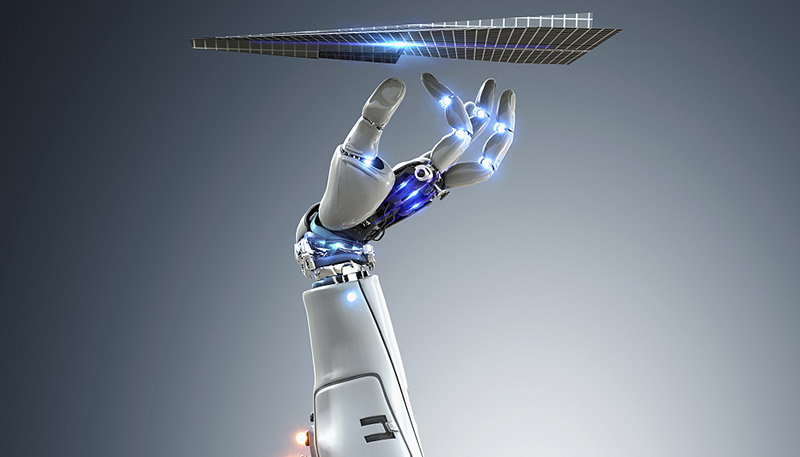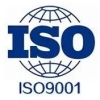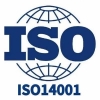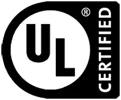3D vision sensors: the core driving force of robot intelligence

In today's fast-moving technological era, robotics is changing the way we live and work at an unprecedented rate. As a core driver of robot intelligence, 3D vision sensors play a crucial role in this transformation. By simulating the human visual system, 3D vision sensors give robots the ability to perceive and understand three-dimensional space, which greatly improves the intelligence level of robots. This paper aims to deeply discuss the application and influence of 3D vision sensor in robot intelligence, analyze its working principle, technology types, application fields, challenges and future development trends, and provide a comprehensive understanding and reference for related research and application.
一.Overview of 3D vision sensors
3D vision sensor is an advanced sensing device that can obtain three-dimensional spatial information of objects. By simulating the principle of human binocular vision, it obtains the depth information of the target object by various technical means, to build a three-dimensional space model. Based on techniques such as triangulation, time of flight or structured light, the sensor calculates the distance and shape of an object by emitting a specific pattern of light sources and analyzing the changes in the reflected light.
At present, the mainstream 3D vision sensor technologies on the market include stereovision, structured light, time of flight and laser scanning. Stereo technology mimics the human eyes and uses two or more cameras to capture images from different angles, calculating depth information through parallax. Structured light technology obtains three-dimensional information by projecting specific patterns and analyzing their deformation. Time-of-flight technology calculates distance by measuring the round-trip time of light pulses, while laser scanning technology uses a laser beam to quickly scan the surface of an object to obtain high-precision three-dimensional data. Each of these technologies has its advantages and disadvantages and is suitable for different application scenarios, which together promote the rapid development of 3D vision sensor technology.
二.The application of 3D vision sensors in the field of robotics
In the field of industrial robots, the application of 3D vision sensors has greatly improved production efficiency and accuracy. They are widely used in automated assembly, quality inspection, material handling and other links. For example, in automotive manufacturing, 3D vision sensors can accurately identify and position parts to guide robots in precise assembly. In the inspection of electronic products, they can quickly identify small defects and improve product quality. In addition, 3D vision sensors also play an important role in complex processes such as welding and spraying, ensuring the accuracy and consistency of operations.
Service robots are another important application area for 3D vision sensors. In home service robots, 3D vision sensors help robots identify furniture, obstacles, and humans for autonomous navigation and obstacle avoidance. In the field of commercial services, such as hotels, restaurants and other places, robots equipped with 3D vision sensors are able to better understand the environment and provide more intelligent services. For example, they can recognize customer gestures, understand simple commands, and even provide personalized service through facial recognition. These applications not only improve service efficiency, but also greatly enhance the user experience.
In the field of medical robotics, the application of 3D vision sensors is revolutionizing medical diagnosis and treatment. In surgical robots, 3D vision sensors provide high-precision stereo vision to help doctors see the surgical area more clearly and improve surgical accuracy. In the rehabilitation robot, they can monitor the movement status of patients in real time and provide personalized rehabilitation training programs. In addition, 3D vision sensors also play an important role in medical imaging, prosthetic limb control and other fields, bringing revolutionary changes to the medical industry.
三.The central role of 3D vision sensors in promoting robot intelligence
The core role of 3D vision sensors in promoting robot intelligence is mainly reflected in environmental perception and understanding, autonomous navigation and obstacle avoidance, precise operation and control, human-computer interaction and collaboration. In terms of environmental perception and understanding, 3D vision sensors give robots depth perception, enabling them to accurately identify and locate objects and understand complex environments. This ability is essential for robots to perform tasks in dynamic, unstructured environments.
In terms of autonomous navigation and obstacle avoidance, 3D vision sensors provide real-time three-dimensional environmental information, enabling robots to build accurate maps of the environment, plan optimal paths, and avoid dynamic obstacles in real time. This capability greatly expands the range of applications of the ALS80U103NT450 robot, enabling it to move and work autonomously in complex and changing environments. In terms of accurate operation and control, the high-precision three-dimensional information of the 3D vision sensor provides the robot with accurate spatial positioning and object recognition capabilities, enabling it to carry out fine grasping, assembly and other operations, which greatly improves the accuracy and efficiency of the operation.
Finally, in terms of human-computer interaction and collaboration, 3D vision sensors enable robots to better understand and respond to human movements and intentions. By recognizing gestures, expressions, and body language, robots can interact more naturally with humans, enabling closer human-machine collaboration. This ability is particularly important in the field of service robots and collaborative robots, laying the foundation for the integration of robots into human social life.
四.The challenges and future development trends of 3D vision sensors
While 3D vision sensors have made significant progress in driving robot intelligence, several challenges remain. In terms of technical bottlenecks, how to maintain stable performance under complex lighting conditions, how to improve the resolution and accuracy of the sensor, and how to reduce power consumption and cost still need to be solved. In addition, data processing and real-time performance are also important challenges, especially in application scenarios that require rapid response.
In terms of application limitations, the reliability of current 3D vision sensors in extreme environments (such as high temperature, strong vibration, etc.) still needs to be improved. At the same time, there are still difficulties in identifying and measuring transparent, reflective or highly complex objects. These limitations restrict the application of 3D vision sensors in some special fields to a certain extent.
The future development trend is mainly focused on technological innovation and performance improvement. On the one hand, new sensor technologies such as quantum dot imaging and metasurface imaging are expected to break through the limitations of existing technologies and provide higher performance 3D visual perception. On the other hand, the integration of artificial intelligence algorithms will greatly improve the intelligence level of 3D vision sensors, enabling them to better understand and interpret complex scenes. In addition, miniaturization and integration are also important trends, which will enable 3D vision sensors to be applied in more miniaturized and portable devices.
3D vision sensors, as the core driving force of robot intelligence, are profoundly changing the development trajectory of robot technology. By empowering robots with depth perception and three-dimensional understanding, 3D vision sensors greatly improve robot performance in environmental perception, autonomous navigation, precise manipulation, and human-computer interaction. Although there are still some technical challenges and application limitations, with the continuous progress and innovation of technology, 3D vision sensors will certainly play an important role in a wider range of fields, promoting robots to a higher level of intelligence. In the future, with the integration of artificial intelligence, new materials and other technologies, 3D vision sensors are expected to achieve greater breakthroughs, opening up new possibilities for the development of robotics, and ultimately achieving the deep integration of robots and human society.
您可能感興趣的產品
 |
AA53002-015 | XFRMR TOROIDAL 300VA CHAS MOUNT | 8352 More on Order |
 |
62054-P2S02 | XFRMR TOROIDAL 15VA CHAS MOUNT | 3526 More on Order |
 |
62051-P2S02 | XFRMR TOROIDAL 15VA CHAS MOUNT | 3312 More on Order |
 |
62044-P2S02 | XFRMR TOROIDAL 10VA CHAS MOUNT | 6048 More on Order |
 |
62025-P2S02 | XFRMR TOROIDAL 5VA CHAS MOUNT | 3924 More on Order |
 |
62012-P2S02 | XFRMR TOROIDAL 3.2VA CHAS MOUNT | 3204 More on Order |
 |
62075-P2S02 | XFRMR TOROIDAL 35VA CHAS MOUNT | 7308 More on Order |
 |
70074K | XFRMR TOROIDAL 35VA THRU HOLE | 6840 More on Order |
 |
70054K | XFRMR TOROIDAL 15VA THRU HOLE | 4716 More on Order |
 |
70043K | XFRMR TOROIDAL 10VA THRU HOLE | 5562 More on Order |
 |
70041K | XFRMR TOROIDAL 10VA THRU HOLE | 2826 More on Order |
 |
70031K | XFRMR TOROIDAL 7VA THRU HOLE | 8658 More on Order |
 |
70024K | XFRMR TOROIDAL 5VA THRU HOLE | 8748 More on Order |
 |
70015K | XFRMR TOROIDAL 3.2VA THRU HOLE | 7578 More on Order |
 |
70014K | XFRMR TOROIDAL 3.2VA THRU HOLE | 5562 More on Order |
 |
70011K | XFRMR TOROIDAL 3.2VA THRU HOLE | 7560 More on Order |
 |
70003K | XFRMR TOROIDAL 1.6VA THRU HOLE | 2520 More on Order |
 |
70002K | XFRMR TOROIDAL 1.6VA THRU HOLE | 5040 More on Order |
 |
62015-P2S02 | XFRMR TOROIDAL 3.2VA CHAS MOUNT | 3780 More on Order |
 |
70025K | XFRMR TOROIDAL 5VA THRU HOLE | 4068 More on Order |
 |
62084-P2S02 | XFRMR TOROIDAL 50VA CHAS MOUNT | 7284 More on Order |
 |
70034K | XFRMR TOROIDAL 7VA THRU HOLE | 8088 More on Order |
 |
AC1050 | CURR SENSE XFMR 50A T/H | 7362 More on Order |
 |
AC1010 | CURR SENSE XFMR 10A T/H | 5963 More on Order |









